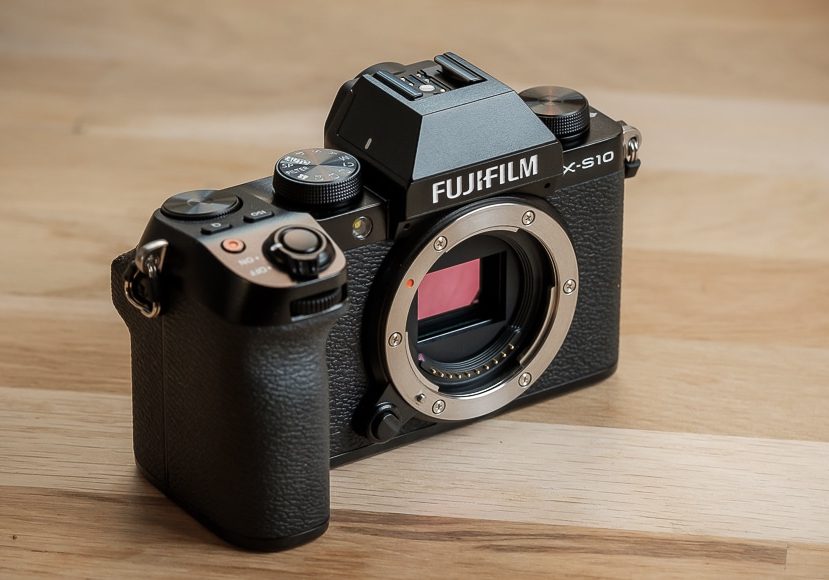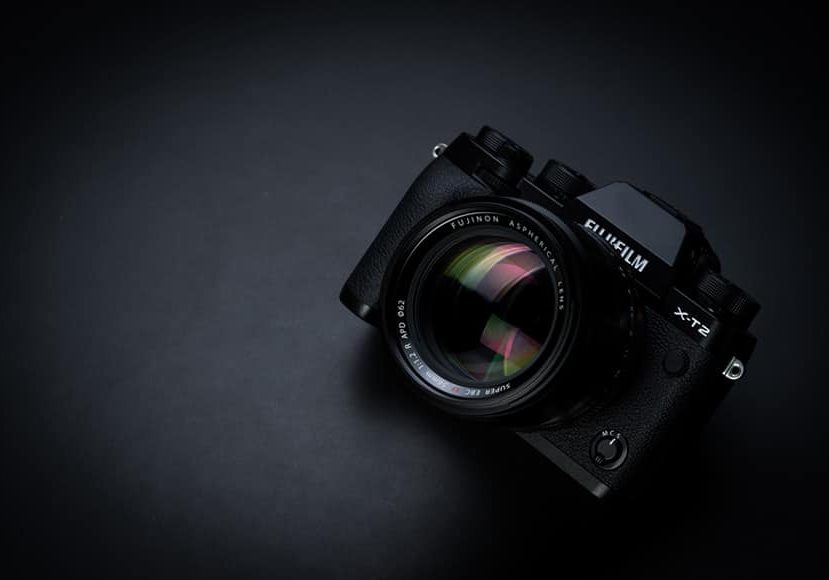
If you’re a newcomer to photography, this guide will help you choose the best Fujifilm camera for beginners.
Thanks to their manual controls, most Fujifilm cameras are easy to use and intuitive for novice photographers.
However, some mirrorless cameras in the X-Series and GFX System offer unnecessary features for beginners.
I’ve used various Fujifilm cameras for several years for personal and professional photography.
I often recommend them to friends and family over other brands due to their ease of use and excellent image quality.
One big advantage is the film simulations, which means beginners don’t need to learn how to edit their photos.
(Nikon, Canon, and Sony beginner cameras don’t offer these built-in film simulations, making Fujifilm a popular choice.)
All the entry-level Fujifilm X-Series cameras I’ve chosen below are well suited to newbies and first-timers.
Let’s take a closer look together at the recommendations.
What is the Best Fuji Camera for Beginners in 2023?
Fujifilm X-T30 II (Best Overall Fujifilm Camera for Beginners)
- Solid build
- Excellent autofocus
- Outstanding image quality
- Image stabilisation
- Intuitive interface
- Limited video setting customization
The Fujifilm X-T30 II is the best mid-range Fujifilm model and is great for beginners.
It performs well whether you want to take stills or record video and has 80% of the features of the X-T3 (a higher-end camera) while being smaller, lighter, and cheaper.
This compactness and portability are some of the things that beginners often look for.
If you feel like you can take your camera with you anywhere, you’re more likely to use it. And obviously, the more you use your camera, the better you’ll get.
It’s not just easy to carry around, either. The menu has a simple design that’s easy to navigate, so you can learn about the camera and its settings quickly and in a way that makes sense.
The way the buttons and dials are laid out on the Fujifilm X-T30 II is perfect for those learning the ropes of photography.
You have everything you need, and it’s exactly where you need it. The X-T30 II has an intelligent design.
This next point might not seem so important, but it’s an extremely good-looking Fujifilm camera. Its retro style really makes you want to handle it – which is another thing that will play into the hands of beginners.
It has in-built image stabilization, so novices can get to grips with composition in challenging light conditions without worrying about shaky images – check the video below for more information on this:
A vari-angle touchscreen also allows easy menu navigation and experimentation with different shooting perspectives.
Another good feature for newcomers is the film simulation modes, which, as you could expect from Fuji, are excellent.
These can really help photos and footage pop right out of the camera for beginners, which can create a lot of confidence.
It also means that newcomers to photography needn’t worry abut using any editing software, since the JPEGS look so good straight out of camera (SOOC).
Coincidentally, the Fujifilm X-T30 II is the cheapest Fuji camera with film simulations.
Also, something I haven’t even mentioned yet…the camera’s powerful processor and 26.1-megapixel X-Trans CMOS 4 back-illuminated sensor means that the image quality, even before you add any film simulation to it, is incredible.
This Fujifilm camera also works great when paired with the XC 15-45mm lens. Which is convenient, as that’s often the kit lens it comes with.
Fujifilm X-S10 (Best Fujifilm Camera for Beginner Vlogging and Videos)
- Lightweight and compact
- User-friendly design
- Image stabilization
- Good autofocus
Thanks to its solid video specs, the Fujifilm X-S10 is a solid choice for those looking to get into vlogging and videography.
It’s compact and ergonomic, which means it is ideal for run-and-gun video making – handheld shooting with minimal equipment.
With its vari-angle tilt-screen, beginners can get creative, too. And the angle of the tilt means the screen can face you, which makes vlogging and selfie-taking an absolute breeze.
The Fujifilm X-S10‘s menu system is easy and intuitive to navigate and designed with beginners in mind. They can easily find what they’re looking for, learn about the camera, and level up their skills.
The Fuji X-S10 has the same powerful sensor as both the XT-3 and XT-4, which are higher-end cameras.
This gives you outstanding low-light performance, deep, realistic Fuji colors, and excellent film simulations, which can all be used both at 1080p and when shooting 4K footage at 30fps (with no crop).


Fujifilm X-S10 sample image | The Fujifilm X-S10 captures all that natural color, texture, and dynamic range | Greg Cromie
Being able to shoot in low light with ease is very important for those just starting out.
Also, those Fuji film simulations can show newbies the creative possibilities of their new machines and also give them the confidence that images and footage will look great right out of the camera.
The Fujifilm X-S10 also has high-quality in-body image stabilization. With this, you can get sharp photos and footage even when shooting handheld or at slow shutter speeds and just be able to focus on composition.
For those on a budget, you can even pick up one of these Fujifilm cameras used at KEH Camera for under $850.
Fujifilm X-T2 (Best Budget Fujifilm Camera for Beginners)
- Affordable
- Excellent control layout
- User-friendly
- Great image quality
- A little heavy
- Limited touchscreen functions
This is another retro-looking offering from Fuji, and as it’s an older model now (Fuji are up to the X-T5), you can often find a great bargain.
Its retro design, which has the look and feel of old film cameras, will give beginners a tactile experience and allow them to feel like they’re really getting involved in the nuts and bolts of photography.
All the buttons and dials you need to adjust your exposure and change your aperture and shutter speed are at your fingertips. There’s no need to mess around with menus.
Although, if you want to get into the menu, it’s designed to be user-friendly. It’s well-organized, and there are options to customize settings to set up the camera in a personal way.
Its powerful 24.3-megapixel X-Trans CMOS 3 sensor produces images of the fine quality that Fuji shooters take for granted.
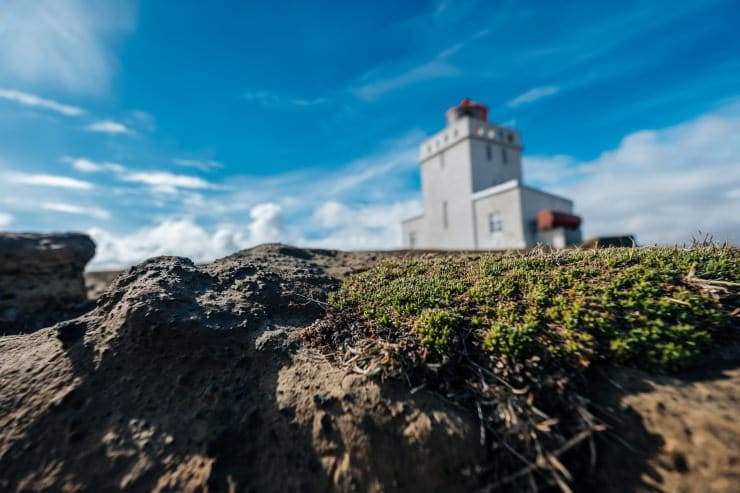

Fujifilm X-T2 sample image | The Dyrhólaey lighthouse in Iceland. Great colors and dynamic range. That’s the X-Trans III | Jonas Rask
It also has excellent autofocus capabilities, which is essential for beginners, as it helps them get sharp images with minimal hassle, allowing them to focus on composition.
It has Fuji’s excellent film simulations and Auto and Scene modes, which can help newbies optimize their settings in a kind of ‘set-and-forget’ way, which will let them practice photography with fewer technical elements to think about.
Despite being a Fujifilm camera with a retro feel, it’s not without modern additions. A tilting LCD screen at the rear will enable shooters to get creative with their angles and perspectives.
It also has an Electronic Viewfinder, which will make newcomers feel more immersed in what they photograph, especially if newcomers are moving over from smartphones.
Fujifilm X-F10 (Best Fujifilm Point & Shoot Camera for Beginners)
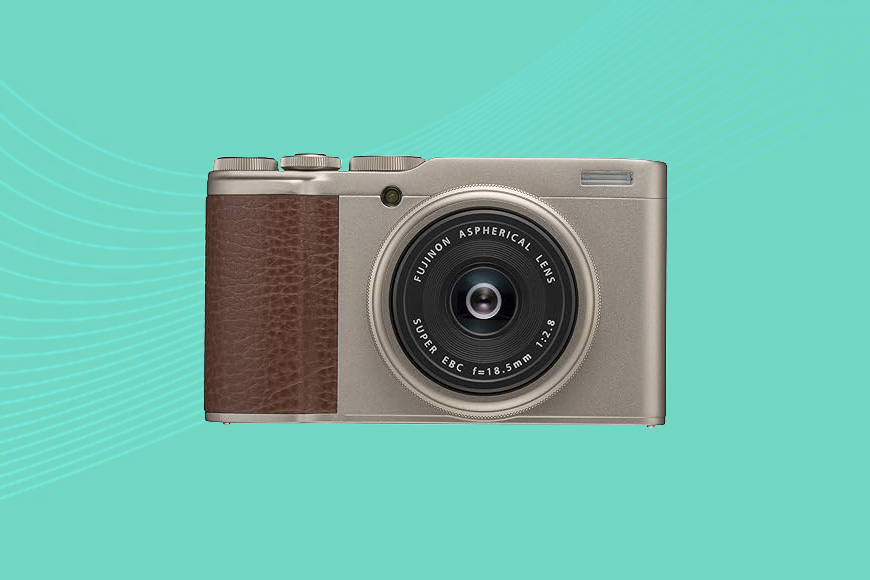

- Great quality lens
- Compact and lightweight
- User-friendly
- Film simulations
- Users may quickly outgrow the fixed-lens
- 4K video only 15fps
This fixed lens point-and-shoot is the best Fujifilm camera for beginners who want a simple option to start off with.
It’s compact, lightweight, stylish, and easy to use.
There are minimal controls, and the whole thing feels very streamlined. This means that newcomers to photography can concentrate on framing and composition without the need to get to grips with a load of buttons and dials.
The settings, though, can be easily adjusted using the rear touchscreen, and the menu accessible from there is easy to navigate.
The camera comes with a fixed 18.5mm f/2.8 lens. This focal length is the full-frame equivalent of 28mm, which is a versatile perspective to play with.
It’s wide enough to allow you to shoot a range of subjects, such as travel, architecture, and landscape, while not being too wide.
The aperture means the lens is fast enough to shoot in low light.
The X-F10 also contains a 24-megapixel APS-C sensor, which is bigger than you’d normally expect to find in a camera of this size.
With this, you’ll get great, detailed images of a level and vibrancy that will encourage you to keep shooting.
You also get Fuji’s excellent film simulation modes to help you create beautiful images in-camera without needing to do any post-production.
Fujifilm X-T30 (Alternative Best Budget Fuji Camera for Beginners)
- Great value
- User-friendly
- Tilt-able touchscreen
- Excellent autofocus
- Not fully weather-sealed
- 4K video is cropped
Another older Fuji model, the X-T30, is an alternative to our best overall choice, the X-T30 II, which is easier on the pocket.
Like some of the other Fujifilm cameras mentioned in this guide, it has a classic look and feel reminiscent of old film cameras.
It has an intuitive layout of dials and buttons that are ideal for the beginner to get to grips with the basics of photography. You can control all of your exposure settings without going into any menus.
But you can also get into the menu and adjust those settings and others from the touchscreen at the back of the camera.
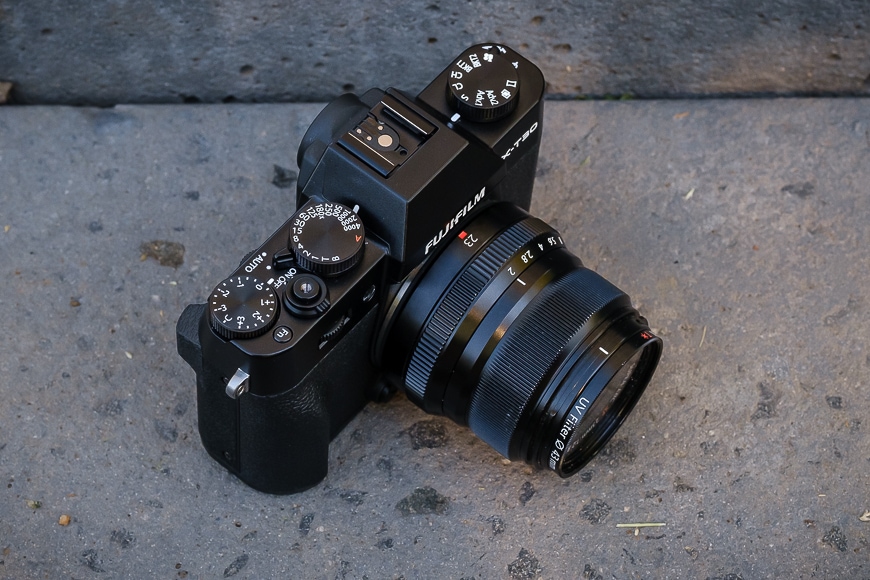

The Fujifilm X-T30 gives you the full freedom of manual control of your settings | Greg Cromie
These menus are set out to make it easy for newbies to access everything they need and learn about their cameras in a way that makes sense.
The X-T30 includes a guide mode to help you as you learn, providing beginners with explanations and tips as they navigate the camera’s interface.
That touchscreen I mentioned is tilt-able, too, which allows you to experiment with different angles and perspectives for your compositions. Plus, it’s touch-enabled for focus, too, so you can set that without needing to look through the viewfinder.
Despite it being an older model now, it’s definitely no slouch when it comes to specifications.
It boasts a powerful processor, the X-Processor 4, and a 26.1 megapixel APS-C X-Trans BSI-CMOS 4 sensor.
These are normally found on the higher-end XT-3, making the X-T30 great value for money.


Fujifilm X-T30 + Fujifilm XF 23mm f/2 | 1/800 f/8 ISO400 | Greg Cromie
And they’ll give you excellent quality images – detailed and vibrant – which can also be treated with Fuji’s renowned film simulations to give you creative looks straight out of the camera.
Its autofocus capabilities are great, too, with 425 phase-detection autofocus points.
It’s quick, accurate, and reliable, ensuring beginners can focus on shooting and framing, confident that their shots will be sharp and in focus in all the right places.
Which Fujifilm Lens Should Beginners Start With?
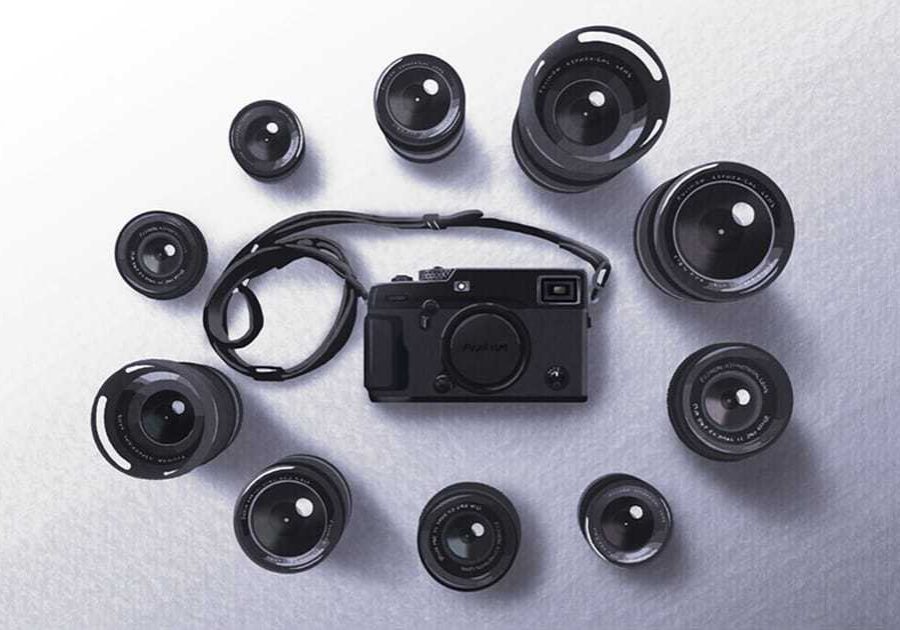

The answer to this will depend on your personal needs, what you prefer to shoot, and what you consider to be your shooting style.
Generally, though, it’s often a good idea to start off with a versatile lens while you figure all of this out and then make upgrades once you know which focal length (or lengths) you use most.
One of the most versatile lenses for Fujifilm cameras is their 18-55mm f/2.8-f/4, which is why it’s often offered as a kit lens.
With that focal range, you can easily cover most things. It’s wide enough for landscapes and street photography and will extend far enough to shoot detailed shots or portraits.
It will also give you reasonable low-light performance.
A 35mm lens is also a great option, and the Fujinon XF 35mm f/2 is an excellent lens for those starting out.
It’s great in low light, weather-sealed, and has outstanding autofocus. And that focal length is really a versatile one.
Or how about a ‘nifty fifty’? 50mm lenses are great fun to learn on, and when I was starting out, it was pretty much all I shot with.
There’s nothing like a 50mm to teach you about composition, to force you to think about how to frame your shots, where to stand, and how to create the shots you want to take physically. They’re also great for portrait photography.
You’d be looking at the Fujinon XF 50mm f/2 if you went with this option.
There are other options, such as wide-angle lenses or macro lenses and the like, so if you’re a beginner wanting to get into a particular niche, you should look into those.
But for anyone who is starting out in a more general way and looking for versatile lens options that they can also grow with, the ones I’ve outlined above are, in my opinion, the best choices.
FAQs about Fujifilm Cameras for People Learning Photography
Is Fujifilm a good camera for beginners?
Fujifilm offers a great range of excellent cameras for beginners.
They are known for producing well-built, well-designed, stylish devices that produce images and footage of high quality.
They also manufacture some of the best lenses on the market, so if you start with an interchangeable lens system, you’ll also have a lot of glass options to choose from.
Which Fujifilm camera is the most user-friendly for beginners?
If you’re looking for the utmost simplicity when it comes to learning about photography, then the best Fujifilm camera is the X-F10.
As a highly portable point-and-shoot with minimal physical controls, beginners can just get on with shooting and learning about composition.
Beginners looking for something a bit more complex should consider the X-T30 II.
It has everything a serious beginner is looking for in terms of specifications, plus a user-friendly physical layout and interface that will gently guide them through their photo journey as they progress.
What is the best Fujifilm budget camera?
Beginners on a budget should check out the X-T2 and the X-T30.
Both Fujifilm cameras are older models that still hold their own in today’s market.
They have the user-friendly qualities beginners will be looking for, plus the powerful features that will help them produce the kind of imagery that will make them want to keep shooting.
Which Fujifilm camera is best for video recording?
The Fuji X-S10 is the best Fujifilm camera for beginners who want to specialize in video.
It’s portable and powerful, ideal for those wanting to get their feet wet without investing in other equipment.
It’s very easy to learn to use, comes with in-body image stabilization, and, most importantly, shoots 4K video with no crop.
In the X-S10, beginner videographers have a great tool with which to start capturing professional-level and professional-resolution footage without breaking the bank.


